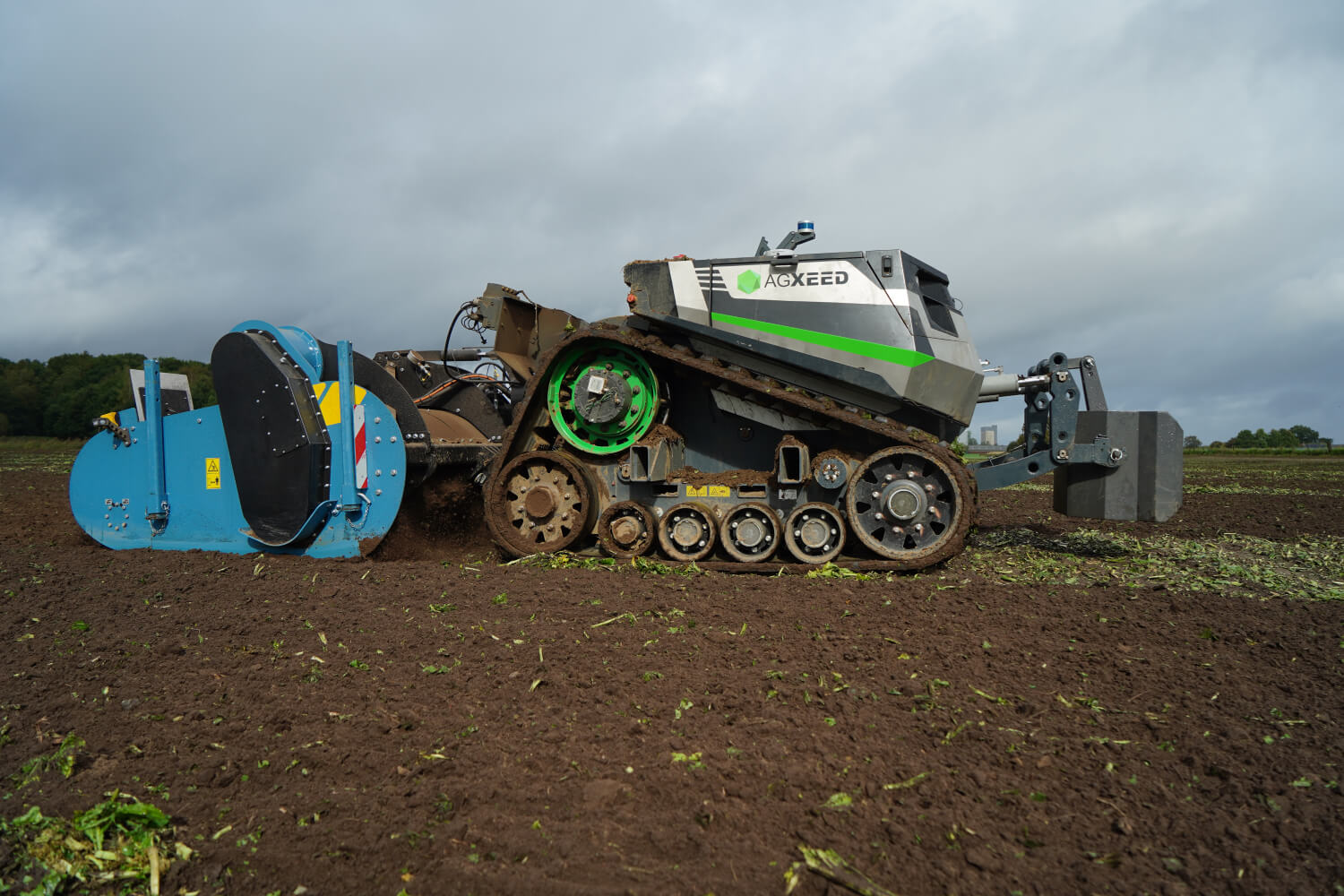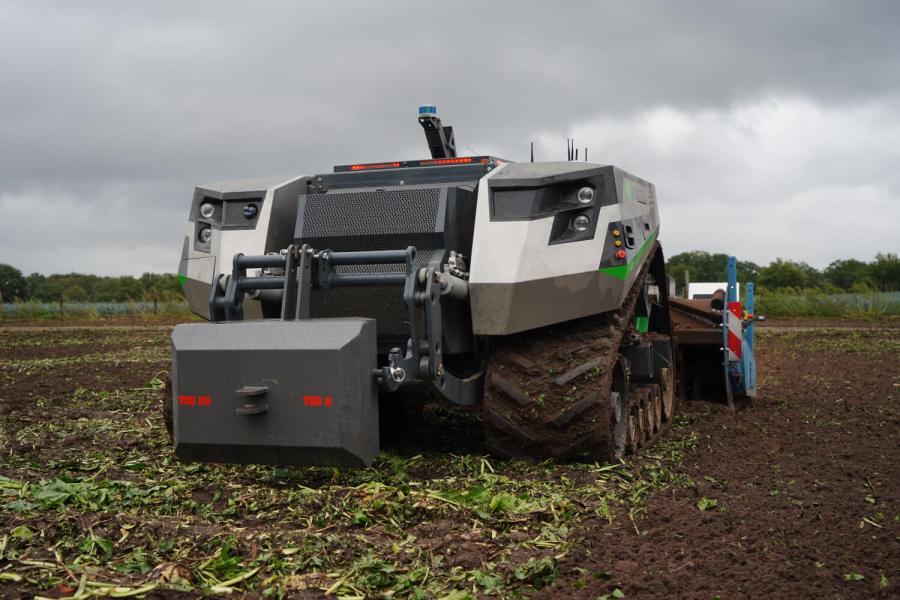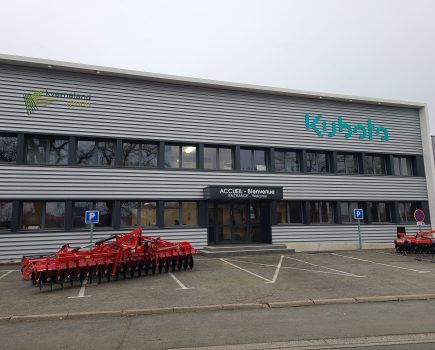John Deere unveiled an autonomous rubber-tracked concept at the last Agritechnica and Horsch is also field testing a prototype. However, the AgBot developed by Dutch startup AgXeed will probably be the first to enter series production.
Powered by a standard four-pot 156hp Deutz block mated to a generator, the top speed of the electrical drivetrain in the prototype is 13.5km/hr. Able to power implements via its 136hp/700v electric connectors, the Imants rotary spader/subsoiler, one of a number of machines field tested last autumn, was converted to electric drive.
Fitted with GPS, sensors and optical recognition for obstacles in the first instance, track width is infinitely adjustable from 1.8 to 3.0m. The capacity of the front and rear linkages is 3.0t and 8.0t respectively and the maximum hydraulic flow is 80l/min.

Implements are connected manually. For transport, they fold on top of the unmanned vehicle, and a separate twin wheel axle/drawbar is available to tow the vehicle behind a tractor.
The second machine expected to be in the fields within a couple of weeks will have a 100kW electrically-driven PTO to power standard implements, such as a power harrow. Machine number two will also have independent track suspension, as will a third unit planned for the autumn.
All three units will be tested at selected European farms this year and the first 10 production machines planned for 2022 are expected to cost around €250,000. Larger volumes will follow in 2023 and the AgBot will be available on interchangeable tracks up to a maximum width of 910mm.





